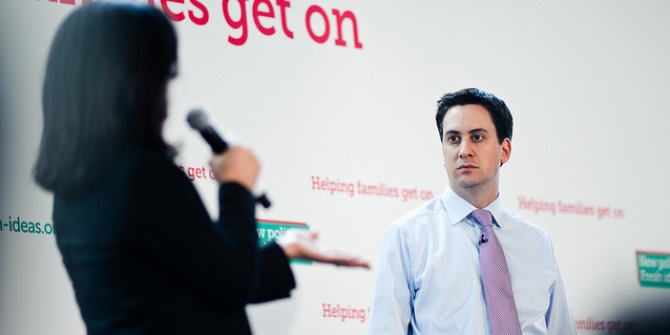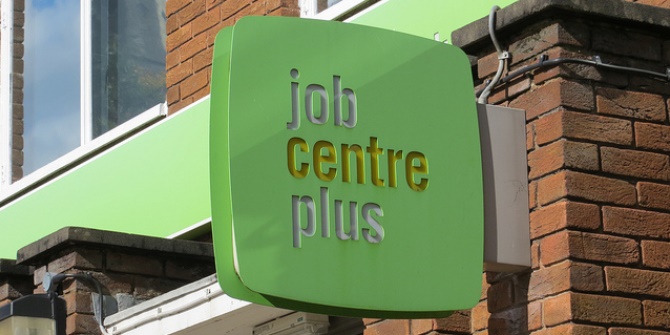
 While much of the debate is centred around the economic implications of Scottish independence, Costas Milas and Tim Worrall investigate whether the narrowing of opinion polls is having economic implications right now in terms of public borrowing costs. Indeed, they find a link between the UK’s cost of borrowing and Scottish independence opinion polls, and argue that this has important implications for current fiscal and monetary policy decisions.
While much of the debate is centred around the economic implications of Scottish independence, Costas Milas and Tim Worrall investigate whether the narrowing of opinion polls is having economic implications right now in terms of public borrowing costs. Indeed, they find a link between the UK’s cost of borrowing and Scottish independence opinion polls, and argue that this has important implications for current fiscal and monetary policy decisions.
As the date of the Scottish independence referendum approaches, the debate on both sides of the campaign has increasingly focused on the economic consequences for an independent Scotland and the Rest of the UK (RUK). Perhaps surprisingly, very little (if any) attention has been given to the implications of Scottish independence polls for current economic developments and in particular what the Scottish opinion polls imply for current borrowing costs in the UK.
The UK polling report lists 54 opinion polls conducted since the start of 2012. These show that Yes support has lagged behind No support by an average of 15.5 percentage points over the period. The Yes campaign point out that gap between Yes and No has narrowed and, in particular, has halved from 24 points in November 2013 to 12 points in March 2014.
We argue that movements in the opinion polls are priced by financial markets over and above the impact of other economic fundamentals. We estimate that a 12 percentage point increase in the Yes support relative to the No support increases the 10-year borrowing costs relative to the 5-year borrowing costs by up to 24 basis points; in fact, a smaller No lead leads to a bigger impact. On the other hand, financial markets do not appear unnerved by fluctuations in the “Don’t know” percentage.
Our assessment of the impact of the opinion polls on the term structure of the UK interest rates (captured by the difference between the yield on the 10-year bond and the 5-year bond) takes account of the impact of economic fundamentals. These include (a) the Treasury’s pledge (on January 13, 2014) to guarantee all of Britain’s debt even if Scotland votes to leave the UK, (b) the positive impact of the international term structure (the difference between the 10-year US and the 5-year US yield), and (c) the positive impact of liquidity risk in the UK bond market (the difference between the 10-year bid-ask spread and the 5-year bid-ask spread).
Possible explanations of an increase in the steepness of the yield curve are that interest rates are expected to rise in the future or there is increased uncertainty about future rates. This is to be expected with an increase in Yes support relative to No support because the increased possibility of a Yes vote in the referendum brings with it added uncertainty about the future course of events. Certainly, if there were to be a Yes vote, there are likely to be protracted negotiations between Scotland and the RUK and Europe on issues of the currency, division of the debt, position of Scotland within the EU and so on.
This link between the UK’s cost of borrowing and Scottish independence opinion polls has important implications for current fiscal and monetary policy decisions. The Debt Management Office (“Debt and Reserves Management report 2014-15”) is planning gilt sales of £128.4bn in 2014-2015. A significant share (25.2%) of these sales is for bonds with maturities of between 1 and 7 years while 21.0% of the share is accounted for by bonds with maturities of between 7 and 15 years (the remainder are longer dated and indexed linked bonds). Assuming that the 10-year yield is a proxy for the cost of bonds (with maturities between 7 and 15 years), we believe that fiscal authorities should be prepared to hedge against the possibility of a sudden increase in the 10-year cost (implied by the Scottish opinion poll results) by purchasing shorter-term bonds at the expense of longer-term ones. Given current plans to sell £26.9 billion in long-term gilts at par value, and assuming these sales are of 10-year coupon bonds, a rise of 24 basis points in the current long-term yield, increases the coupon payments by approximately 8.54% or about £129.12 million per annum. Although this upper estimate is a small percentage of UK GDP, it is approximately equal to the £130 million budget announced by the government to help to secure and maintain critical flood defences before next winter hits.
In reviewing their monthly Quantitative Easing decisions, Bank of England’s Monetary Policy Committee members might also want to keep an eye on movements in the Scottish opinion poll results and indeed be prepared to prioritise repurchases of longer-term UK bonds in an attempt to keep a lid on the longer-term cost of borrowing.
Note: A detailed research note is available here. This article gives the views of the authors, and not the position of the British Politics and Policy blog, nor of the London School of Economics. Please read our comments policy before posting. Homepage photo credit: The Laird of Oldham CC BY 2.0
About the Authors
 Professor Costas Milas is with the Management School at the University of Liverpool.
Professor Costas Milas is with the Management School at the University of Liverpool.
 Professor Tim Worrall is with the Department of Economics at the University of Edinburgh.
Professor Tim Worrall is with the Department of Economics at the University of Edinburgh.






